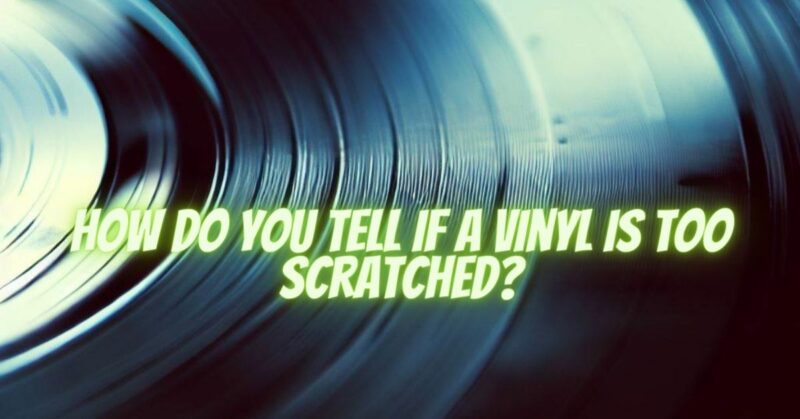Vinyl records, cherished for their unique sound and tactile nature, require proper care to maintain their playability and sound quality. Scratches on vinyl records can impact the listening experience, causing skips, pops, and distortion. In this article, we will explore how to assess if a vinyl record is too scratched and provide guidance on recognizing the severity of scratches.
- Visual Inspection:
The first step in evaluating the condition of a vinyl record is to visually inspect its surface. Look for the following signs of scratching:
a. Visible Scratches: Examine the record under good lighting conditions. If you observe prominent scratches or scuffs on the surface, particularly in the areas where the grooves are located, it may indicate potential playback issues.
b. Deep Groove Scratches: Pay attention to deep scratches that extend across multiple grooves. These deep scratches are more likely to cause skipping or mistracking during playback.
c. Multiple Scratches: If the surface of the record is covered with numerous small scratches or hairline marks, it can affect the overall sound quality, introducing surface noise or distortion.
- Tactile Assessment:
While visual inspection provides initial clues, a tactile assessment can further help in evaluating the severity of scratches:
a. Run Your Fingertip: Gently run your fingertip across the record’s surface, feeling for any noticeable dips, grooves, or deep scratches. If you can feel significant irregularities or catch your finger on deep scratches, it indicates a higher chance of audible playback issues.
b. Audible Clicks or Pops: In some cases, lightly tapping a fingernail or stylus along the groove where a scratch is visible can reveal audible clicks or pops. This indicates that the scratch is likely to cause an audible interruption during playback.
- Playback Test:
The ultimate test of a scratched vinyl record is to play it. While some minor scratches may not affect the overall listening experience, severe or deep scratches can cause significant playback issues. Pay attention to the following during playback:
a. Skipping: If the record consistently skips or jumps in the same spot during playback, it indicates that a deep scratch or groove damage is present.
b. Pops and Distortion: Scratches can introduce pops, clicks, or audible distortion throughout the playback. If these issues are persistent and affect the enjoyment of the music, the record may be considered too scratched.
c. Audible Surface Noise: While surface noise is inherent to vinyl records, excessive crackling, hissing, or persistent noise that is not related to the music can be indicative of a heavily scratched record.
Conclusion:
Assessing the severity of scratches on a vinyl record involves visual inspection, tactile assessment, and playback testing. Visible scratches, particularly deep and multiple scratches, should be closely examined. Running your fingertip across the surface and conducting a playback test can help determine if the scratches impact the listening experience. Remember that minor surface scratches may not significantly affect playback, while severe scratches can cause skips, pops, and distortion. Carefully assessing the condition of a vinyl record will guide you in making informed decisions about its playability and whether it requires repair or replacement to ensure an enjoyable listening experience.

